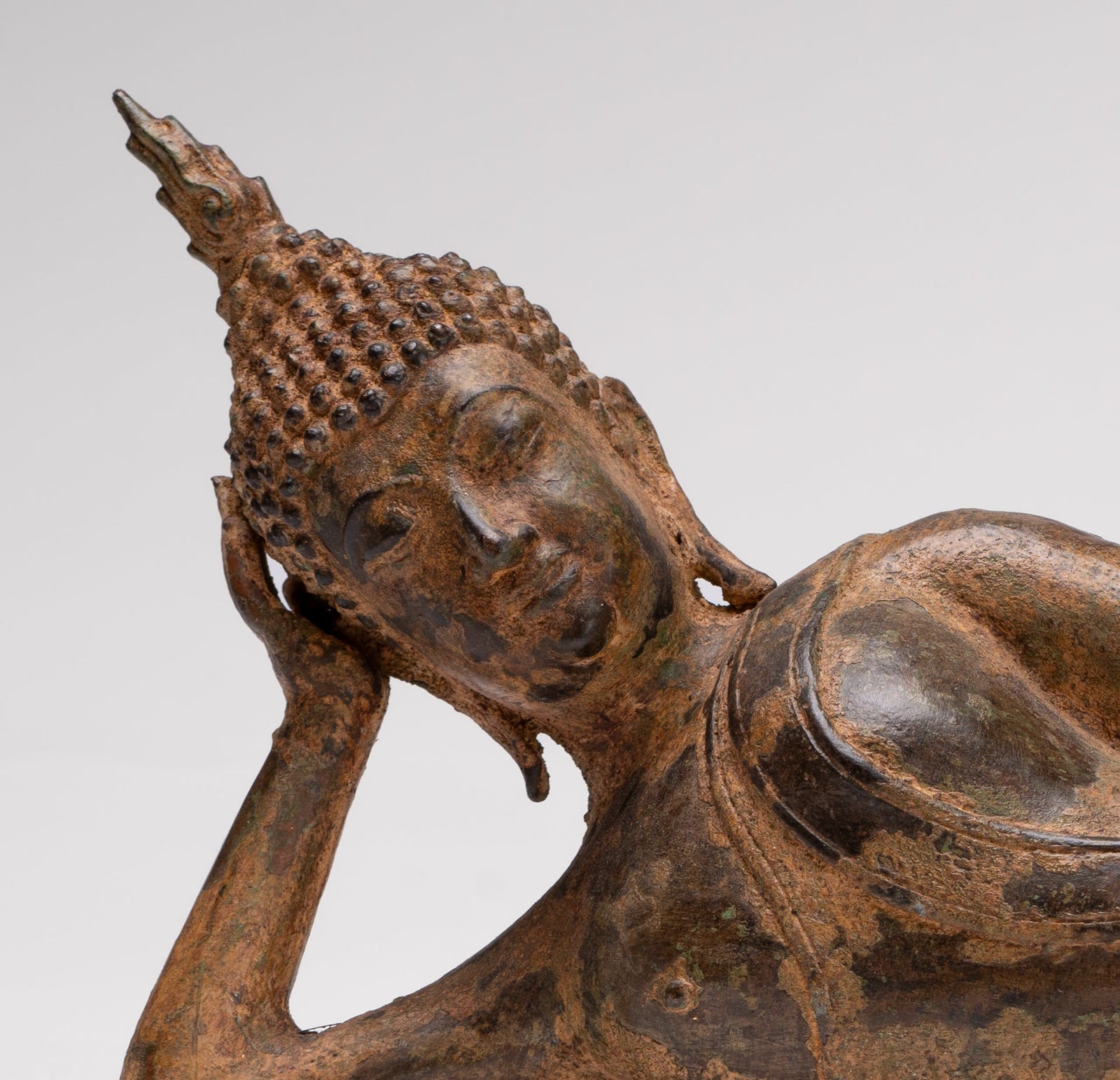
Come il Buddha ha realizzato l'esistenza della rinascita
Il concetto di rinascita è centrale a Filosofia buddista, modellando le sue viste su Karma, Samsara (il ciclo di nascita e morte) e illuminazione. A differenza delle credenze speculative, la comprensione della rinascita da parte del Buddha è venuta esperienza diretta Durante il suo profondo viaggio meditativo verso l'illuminazione.
In questo post sul blog, esploreremo:
-
Come ha scoperto il Buddha rinascita
-
IL Tre conoscenze (Tevijja) Ha guadagnato la notte dell'illuminazione
-
La connessione tra Karma e rinascita
-
La differenza tra Viste buddiste e indù di rinascita
1. La ricerca della verità del Buddha
Nato come Prince Siddhartha Gautama, il Buddha ha vissuto una vita lussuosa nei suoi primi anni. Tuttavia, era profondamente disturbato dalle realtà di invecchiamento, malattia e morte. Questo lo ha portato a lasciare la sua vita reale in cerca di un modo trascendere la sofferenza.
Ha trascorso anni a praticare estremo ascetismo e profonda meditazione, ma si rese conto che né l'indulgenza né l'auto-mortificazione portavano alla vera saggezza. Alla fine, ha adottato il Via di mezzo, un approccio equilibrato alla pratica spirituale e seduto in meditazione sotto il Albero bodhi A Bodh Gaya.
La notte della sua illuminazione, ha raggiunto Tre approfondimenti profondi, noto come il Tre conoscenze (Tevijja). Fu attraverso queste intuizioni che scoprì la verità rinascita.
2. La prima conoscenza: ricordare vite passate
La prima fase dell'illuminazione del Buddha fu il ricordo delle sue vite passate.
"Ho ricordato le mie molteplici vite passate, cioè una nascita, due nascite ... Centomila nascite ... Mi sono ricordato delle modalità di esistenza nelle vite passate."
— Majjhima Nikaya 36 (il più grande discorso a Saccaka)
Durante la profonda meditazione, il Buddha ha visto:
-
Innumerevoli vite precedenti Aveva vissuto, in diverse forme e circostanze.
-
Il suo passato Nomi, famiglie e professioni.
-
IL gioie e sofferenze Aveva sperimentato.
Questa realizzazione lo ha confermato La coscienza non finisce con la morte-Esso continua in un'altra esistenza.
Riflessione artistica
Molti dipinti e sculture buddiste descrivono il Tale di Jataka, che sono storie della vita passata del Buddha. Questi lo mostrano come Un principe, un animale, un salvia e persino gli esseri celesti, illustrando la realtà della rinascita.
3. La seconda conoscenza: vedere la rinascita di altri esseri
La seconda intuizione è stata ancora più profonda: ha visto come Tutti gli esseri subiscono la rinascita secondo il loro Karma (azioni intenzionali).
"Con l'occhio divino, che è purificato e supera l'umano, ho visto gli esseri scomparsi e rinascere, inferiori e superiori, belli e brutti, fortunati e sfortunati, secondo le loro azioni."
— Majjhima Nikaya 36
Attraverso il suo Eye Divine (Dibba-Cakkhu), il Buddha ha visto:
-
Esseri morire e rinarsi in diversi regni, alcuni in celeste stati, altri in sofferenza.
-
Come Il karma determina la rinascita—Gruppive azioni hanno portato a rinomate rinomate, mentre le azioni negative hanno provocato sofferenza.
-
IL Legge di causa ed effetto che governa il ciclo dell'esistenza (Samsara).
Riflessione artistica
IL Ruota della vita (Bhavachakra), un comune dipinto buddista nei templi, raffigura il ciclo della rinascita. Mostra gli esseri rinati in sei regni—Heavenly, Human, Animal, Hungry Ghost, Hell e Demi-Rod Realms-basati sul loro karma.
4. La terza conoscenza: la fine della rinascita
La realizzazione finale era quella La stessa rinascita è una forma di sofferenzae la vera liberazione è Termina il ciclo di Samsara.
-
Il Buddha ha capito che la rinascita continua a causa di brama (tanha) e ignoranza (avijja).
-
Ha visto il Quattro nobili verità, realizzandolo La sofferenza deriva dall'attaccamento e quello il Otto volte percorso porta alla liberazione.
-
Ha raggiunto Nirvana, nel senso che era libero da Desideri, karma e rinascita.
Con questa realizzazione, è diventato il Buddha: quello completamente risvegliato.
Riflessione artistica
-
Statue di Buddha in Dhyana mudra (meditazione postura) rappresentare la sua profonda concentrazione e illuminazione.
-
Scene di La tentazione di Mara Descrivi il momento prima della sua illuminazione, mostrando la lotta finale prima di trascendere Samsara.
5. Rubrth in Buddhism vs. Hinduism
Poiché il buddismo e l'induismo credono entrambi rinascita, come differiscono?
| Aspetto | induismo | buddismo |
|---|---|---|
| Cos'è rinato? | Un'anima eterna (Atman) | Un flusso di coscienza (nessun sé permanente) |
| Cosa guida la rinascita? | Karma e volontà divina | Karma e brama |
| Come sfuggire alla rinascita? | Moksha (Unione con Brahman) | Nirvana (cessazione della sofferenza) |
| Rinascita come dei? | Obiettivo finale in alcune tradizioni indù | Stato temporaneo, ancora parte di Samsara |
| È desiderabile la rinascita? | Può essere positivo (il buon karma porta al paradiso) | Indesiderabile (tutta la rinascita è sofferenza) |
Il buddismo nega il Permanent Soul (Atman) di induismo, insegnando invece quello La coscienza è impermanente e solo un flusso causale continua. L'obiettivo non è rinascita celeste, Ma libertà dalla rinascita del tutto.
Conclusione: un'esperienza diretta, non una convinzione
Il Buddha non accettò la rinascita come fede cieca-Lui l'ho visto direttamente attraverso una profonda meditazione. I suoi insegnamenti Karma, Samsara e Nirvana non sono la semplice filosofia ma approfondimenti pratici nel modo in cui sorge la sofferenza e su come terminarla.
Per chi è interessato Arte e simbolismo buddista, IL Ruota della vita, racconti di jataka e posture reclinabili Rappresenti magnificamente la realizzazione della rinascita da parte del Buddha.


